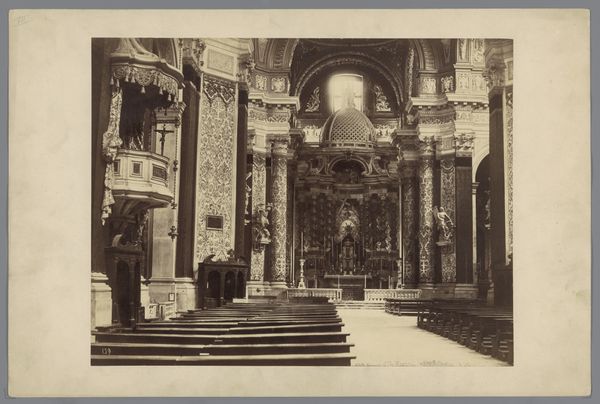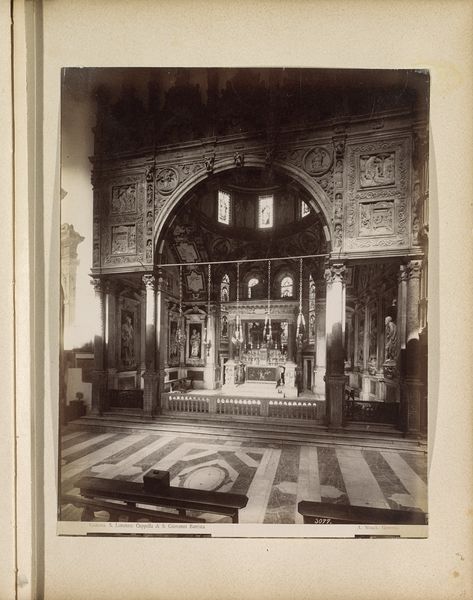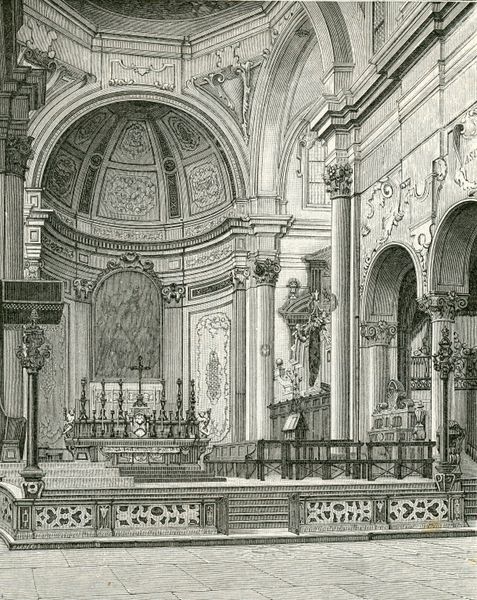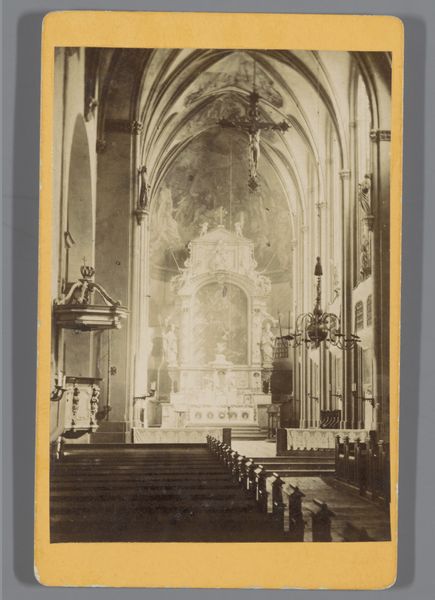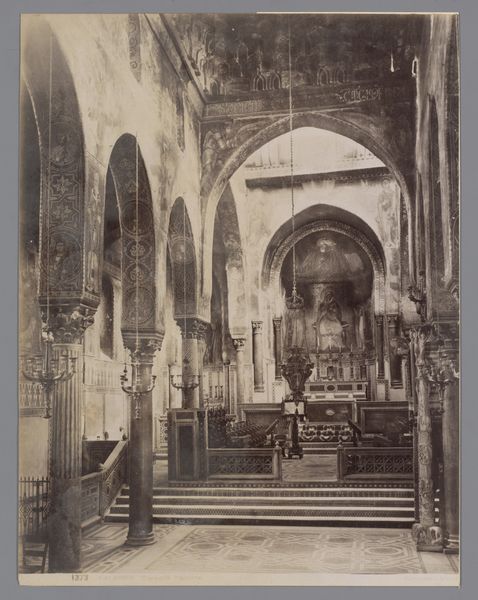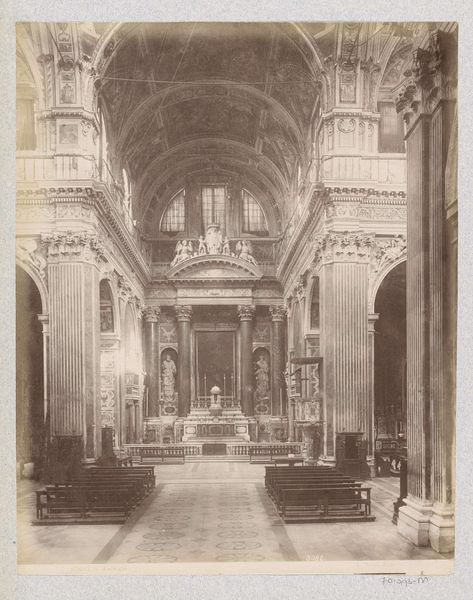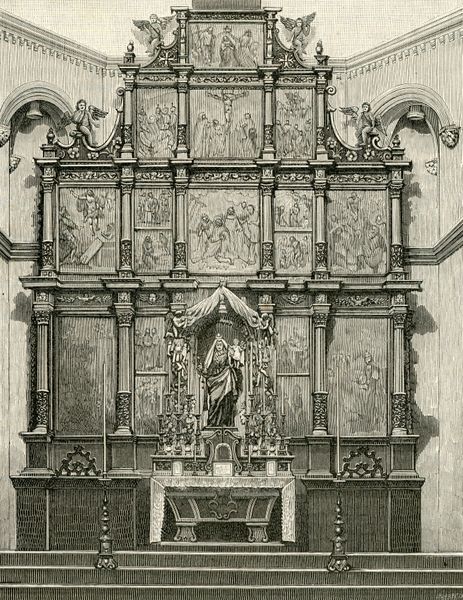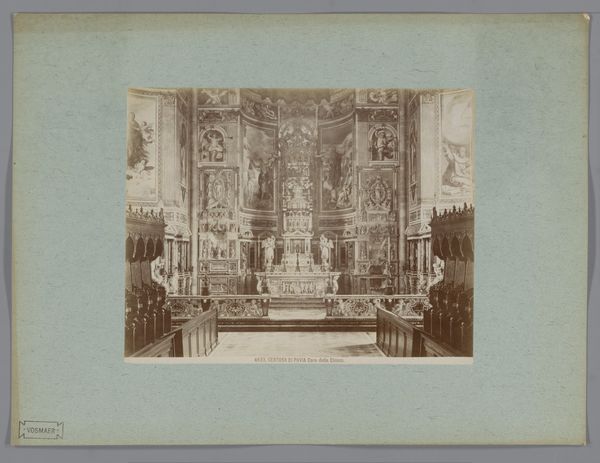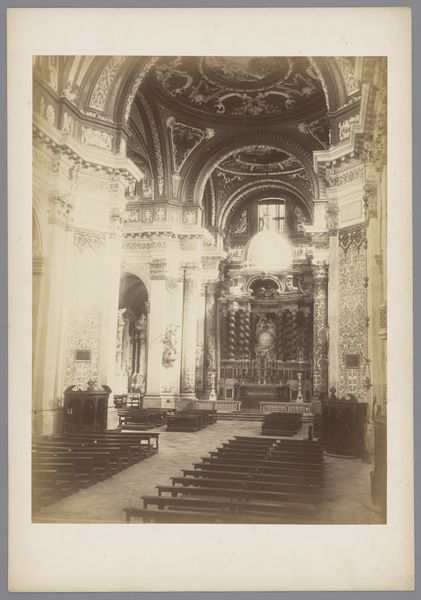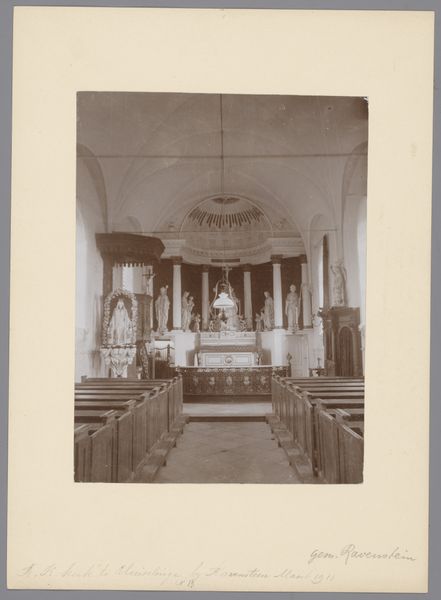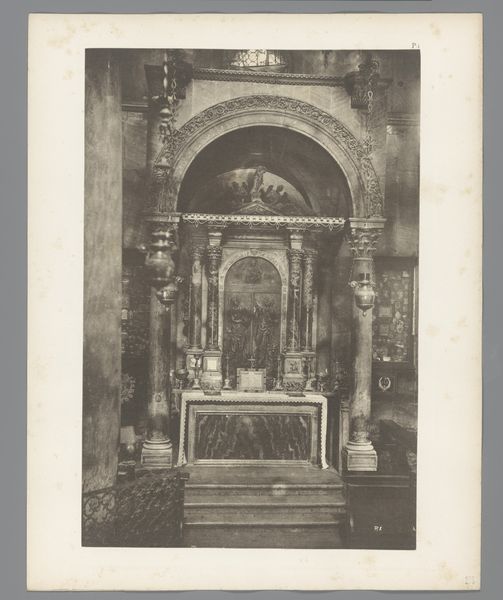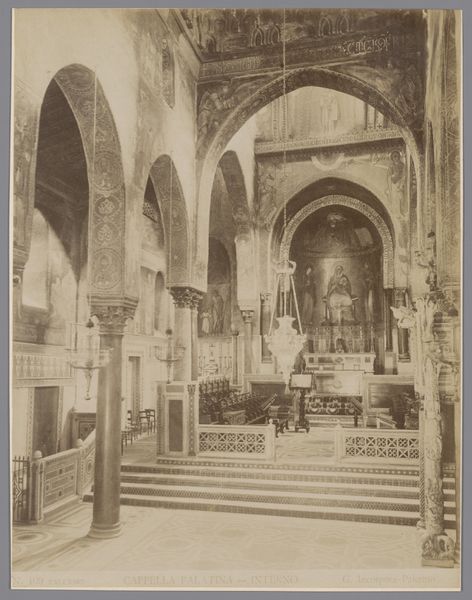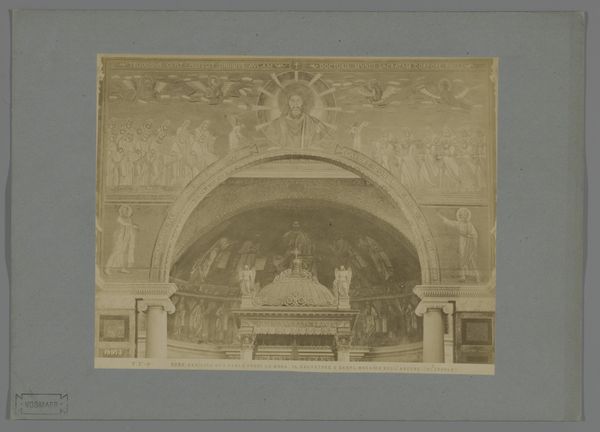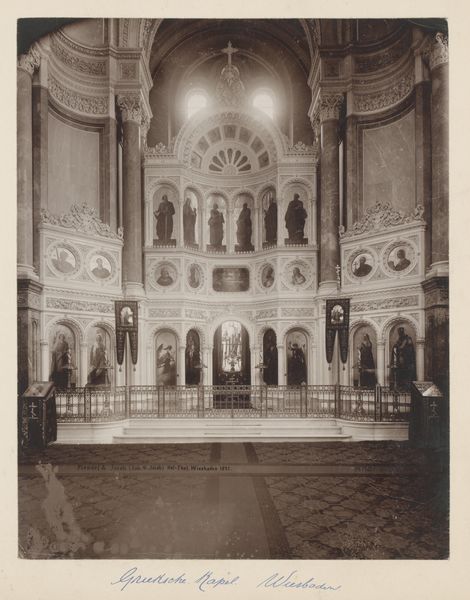
Interieur van de Certosa di Pavia, gezien richting het koor, Pavia, Italië 1856 - 1881
0:00
0:00
print, photography, collotype, architecture
#
medieval
# print
#
sculpture
#
landscape
#
photography
#
collotype
#
ancient-mediterranean
#
architecture
Dimensions: height 304 mm, width 404 mm
Copyright: Rijks Museum: Open Domain
Curator: The image before us offers a glimpse into the Certosa di Pavia in Italy, specifically the interior viewed towards the choir. It's believed this collotype print was created sometime between 1856 and 1881. Editor: It’s overwhelmingly ornate. The sheer density of figures and carvings creates this deeply reverent and slightly claustrophobic feeling. Curator: Absolutely. The Carthusian monastery has a long history and its architecture, a blend of Gothic and Renaissance styles, has always been deeply symbolic. It embodies wealth and the powerful patronage behind the construction. Editor: What immediately jumps out at me are the angelic figures placed around the frame. Especially above, almost reminiscent of the putti motifs, signifying divine love. Do they connect the earthly and celestial realms? Curator: Quite possibly. But beyond that overt religious symbolism, the Certosa also served as a powerful statement of dynastic ambition by the Visconti and Sforza families, particularly, because they aimed to legitimise their rule through religious devotion, visibly presented through the monumentality of spaces such as these. Editor: The interplay between architecture, sculpture, and painting feels like a constructed world. It blurs boundaries between real space and an ideal representation of the spiritual realm. Was this also conceived as stage for religious practices, solidifying religious belief through theatre and awe? Curator: Undoubtedly. Architecture like this reinforced the hierarchical structure of society, and religious belief. Editor: I notice a recurring motif. Repeated angel forms. Is this an attempt at continuity? Some element linking the architectural forms, religious painting and, devotional belief? Curator: The consistent use of that icon suggests a considered strategy of creating coherence throughout the aesthetic elements and, probably, liturgical practices. The Certosa became an important centre of both religious activity, political power but, equally, an artistic showcase. Editor: Thinking about this collotype today and given our knowledge of history, it almost works as a potent time capsule from 19th century Italy. Preserving a vision of faith in an elaborate setting. Curator: And a testament to the complex interplay between faith, power and art that shapes our cultural landscape.
Comments
No comments
Be the first to comment and join the conversation on the ultimate creative platform.
